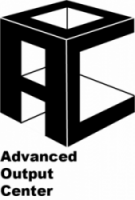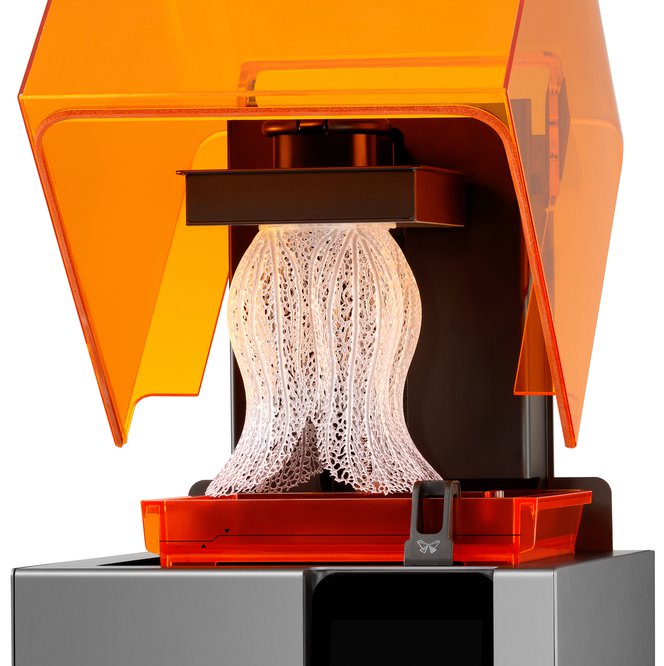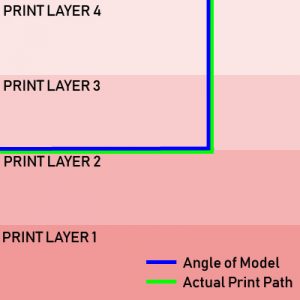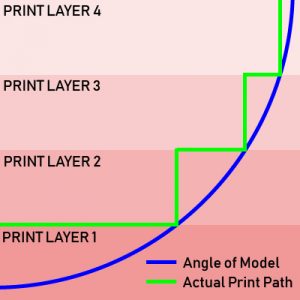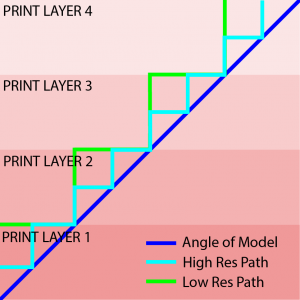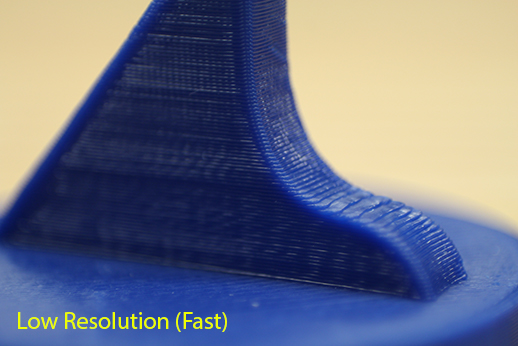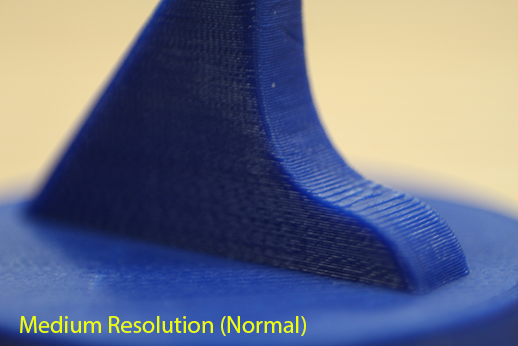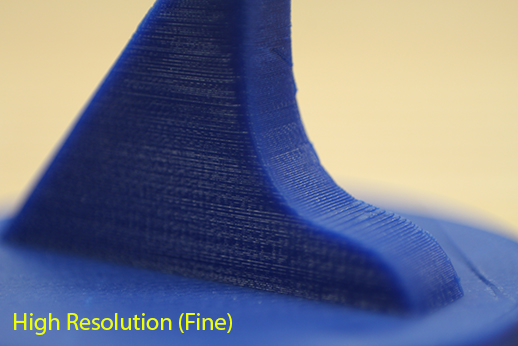Written by: Dan Giroux
What print resolution is right for your print?
Have you ever found yourself sitting at your slicer, setting up a 3D print job, looking through the settings, unsure of what print resolution to use? You may say to yourself “Well I have lots of time, why not use the highest resolution?” It’s hard to resist the temptation to print with the highest print resolution sometimes, after all, it’s only natural to want your print to look as good as it possibly can. Sometimes, however, the highest resolution will not be right for your job. This could be for several reasons, so let’s take a look at some of those possible reasons here.
Some types of models will benefit from higher resolution more than others. Prints with lower resolution tend to have more pronounced “stepping”. How noticeable these layer steps are will be determined by your print. If your model has mostly straight, up and down, 90 degree angles this stepping will not be very noticeable at all. Angled or curved prints, however, are much more susceptible to pronounced stepping. This is because 3D printing in general cannot do angled surfaces, it instead gradually moves inwards or outwards on layers to create a gradual incline of steps, resembling stairs.
The most obviously noticeable reason to print at a lower resolution is the amount of time it can save you. Without exception, higher print resolutions mean longer print times. This is because almost all 3d printers determine resolution by layer height. If the resolutions offered by a machine are labeled 0.1mm or 0.05mm, those numbers are referring to the size of each layer of the print. This is also why the smaller number usually refers to the higher resolution, as that means it is using smaller layer heights.
A print with 0.05mm resolution will be twice as detailed as a print using 0.1mm resolution, because it has twice as many layers in the same space as the lower resolution print. By the same token, since the print has twice as many layers it will take roughly twice as long to print as well. Often times, for longer prints, this can mean many more hours or even days of additional print time. This is not only an inefficient use of your time, but it also blocks the machines so other patrons cannot use them. Consider how much benefit and weather it is necessary for that resolution before selecting it.
Here is the same area of the same file of an actual print, but in a high, medium and low resolution. With these extreme close ups, it is easy to see the difference in layer height and how different areas are effected by it more than others. As you can see, the curved areas are where the layer height will be at it’s most noticeable.
Increased time has more to think about, though, beyond just wasting a lot of time printing. With almost all printers, the longer your print time the more time for the printer to encounter errors or failures. A short and efficient print comes with a lot less risk of running out of filament or shifting than a print that ends as quickly as possible. For this reason many prototypes will be done on the lowest resolution possible. The Formlabs in the AOC, for instance, has a draft resin that allows you to print at 3 times lower resolution than any other Formlabs resin. Many users do not see this as a disadvantage though, as it all but guarantees a completed same day print with an extremely low risk of failure.
If you are still not sure of what print resolution you should use after reading this, stop by the AOC. We have many samples to show you what exactly you can expect, and our experienced staff will be able to give you first hand knowledge for what printer and what settings are right for you.
Dan Giroux
AOC Technician
